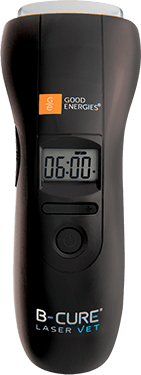From Itching to Hearing Loss: A Comprehensive Guide to Treating Ear Infections in Dogs
Ear infections are a common problem among dogs, with many different types of infections that can occur. If left untreated, ear infections can lead to more serious health problems and discomfort for your pet. In this article, we will discuss the different types of ear infections in dogs and how they can be treated.
Types of Ear Infections in Dogs
1. Otitis Externa
Otitis externa is the most common type of ear infection in dogs. It is an inflammation of the outer ear canal, which can be caused by a variety of factors such as bacteria, yeast, or allergies. Symptoms of otitis externa include itching, redness, swelling, discharge, and an unpleasant odour.
2. Otitis Media
Otitis media is an infection of the middle ear, which can be caused by the spread of an infection from the outer ear canal. A foreign body or trauma can also cause it to the ear. Symptoms of otitis media include head shaking, ear scratching, and a head tilt.
3. Otitis Interna
Otitis interna is the most serious type of ear infection in dogs. It occurs in the inner ear and can cause significant pain, loss of balance, and hearing loss. It is often caused by an infection that spreads from the middle ear and can result from a systemic illness such as a bacterial or viral infection.

Treating Ear Infections in Dogs
- Antibiotics
Antibiotics are often prescribed to treat bacterial ear infections. Depending on the severity of the infection, your veterinarian may prescribe a topical antibiotic or an oral antibiotic.
- Antifungal Medications
Antifungal medications are prescribed to treat yeast infections. These medications can be administered topically or orally.
- Cleaning the Ear
Keeping your dog’s ears clean is an important part of treating and preventing ear infections. Your veterinarian may recommend a specific ear-cleaning solution or provide instructions on how to properly clean your dog’s ears.
- Anti-Inflammatory Medications
Anti-inflammatory medications can help reduce the inflammation and pain associated with ear infections. These medications are often administered orally, but may also be administered topically.
- Laser Therapy
Laser therapy is a non-invasive treatment option that can be used to reduce pain and inflammation, and promote healing. Dog laser therapy, such as B Cure laser for dogs, uses low-level laser therapy to stimulate the cells in the ear and promote healing. This treatment can be particularly effective for chronic ear infections.
- Treating Dog Ear Infection at Home
While it is important to seek veterinary care for your dog’s ear infection, there are also some steps you can take at home to help manage the symptoms. For example, you can clean your dog’s ears using a veterinarian-recommended ear-cleaning solution. You can also use a warm compress to help reduce swelling and inflammation.
- Surgery
In severe cases of ear infections, surgery may be necessary to remove damaged tissue or to allow better drainage of the ear. Your veterinarian will discuss this option with you if it is necessary
Preventing Ear Infections in Dogs
Preventing ear infections is important for the overall health and well-being of your dog. Some steps you can take to prevent ear infections include:
- Regularly cleaning your dog’s ears.
- Keeping your dog’s ears dry.
- Treating any underlying conditions, such as allergies.
- Regular visits to the veterinarian for check-ups and vaccinations.
How Does B Cure Laser for Dogs Work?
B Cure laser for dogs uses a process called photobiomodulation to promote healing. Photobiomodulation involves the use of specific wavelengths of light to stimulate cell activity and improve the body’s natural healing processes.
When the device is applied to the affected area, the light penetrates the skin and stimulates the cells in the area, which can help reduce inflammation and promote healing. This can be particularly effective in treating chronic conditions, such as ear infections, that may not respond to traditional treatment methods.
Benefits of B Cure Laser for Dogs
There are several potential benefits of using B Cure laser for dogs to treat ear infections, including:
- Non-invasive: B Cure laser for dogs is a non-invasive treatment option, meaning that it does not require any incisions or invasive procedures.
- Pain-free: Laser therapy is pain-free and does not require the use of anesthesia or sedation.
- No side effects: B Cure laser for dogs has no known side effects, making it a safe and effective treatment option for many dogs.
- Promotes healing: The light emitted by the device can help stimulate the body’s natural healing processes, promoting faster healing and reducing the risk of recurrence.
Using B Cure Laser for Dogs to Treat Ear Infections.
If you are considering using a B Cure laser for dogs to treat your pet’s ear infection, it is important to consult with a veterinarian first. While laser therapy can be an effective treatment option for many dogs, it may not be appropriate for all cases.
Your veterinarian can help determine if B Cure laser for dogs is the right treatment option for your pet’s ear infection. They can also provide guidance on how to properly use the device and any additional treatments or medications that may be necessary.
Bottom Line
Ear infections are a common problem among dogs, but there are many different treatment options available. While traditional treatments such as antibiotics and anti-inflammatory medications are effective, alternative therapies like laser therapy may offer additional benefits for some pets.
If you suspect that your dog has an ear infection, it is important to seek veterinary care as soon as possible. Your veterinarian can provide a proper diagnosis and recommend the best course of treatment for your pet’s individual needs. With the right treatment and preventative measures, you can help keep your pet’s ears healthy and free from infection.
Disclaimer
The information on the Bcure website is for general informational purposes only and should not be considered professional advice.




